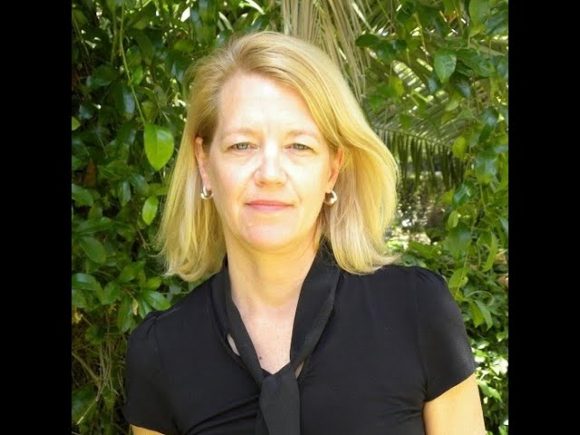Wendy Lower’s The Ravine: The Importance of Atrocity Photograph Research in Propelling Humanitarian Justice
October 4, 2021
Wilkinson College’s Rodgers Center for Holocaust Education began its fall lecture series on September 21st with celebrated scholar and author Wendy Lower, Ph.D., professor of history and director of the Mgrublian Center for Human Rights at Claremont McKenna College, who spoke on her newest monograph, The Ravine: A Family, A Photograph, A Holocaust Massacre Revealed.
“Photographs of suffering or violence can move audiences and propel humanitarian and social justice,” Lower underscored. Through her research and writing on the photographs of Holocaust victims, Lower seeks to restore to the victims their humanity, portraying them as subjects rather than objects of history. The Ravine is a testament to this commitment.
Lower spoke on the difficulty in identifying the victims of the Holocaust who were killed in mass shootings because there are very few records of their deaths. She addressed how such victims are “missing, missing from our memory, missing from our textbooks.” Contextualizing the images of Holocaust victims by investigating the identities of the photographed was Lower’s main motivation in The Ravine. “For me, this was the greatest challenge… and ethically what I really wanted to achieve,” she stated.
The focal point of The Ravine is a single photograph taken in the Ukrainian town of Mirapol on  October 13, 1931. In the photo, Ukrainian Nazi collaborators and German Nazi officers are seen shooting at a Jewish mother and her son who stand at the edge of a pit. Images taken in the midst of shootings during the Holocaust are extremely rare, and Lower first encountered the picture while performing archival research.
October 13, 1931. In the photo, Ukrainian Nazi collaborators and German Nazi officers are seen shooting at a Jewish mother and her son who stand at the edge of a pit. Images taken in the midst of shootings during the Holocaust are extremely rare, and Lower first encountered the picture while performing archival research.
In her study of the image, Lower said she began by isolating small parts of the photo with digital technology to analyze the details. This method progressively offered her more and more information with which she could use to track down the victims. Lower would continue this detective pursuit for ten years, researching through countless pieces of archival evidence, and even visiting Monipol in 2016 to speak with witnesses of the Ukrainian massacres.
Lower’s extensive research led her to discover the location of the massacre, the identities of the Nazi officers in the image, and the identity of the photographer behind the camera. While she was ultimately not able to confirm the victims’ names, Lower’s research did lead her to discover a specific testimony record written by Jewish Holocaust victims in Ukraine around 1931 that entails the names and a picture of who may be the mother and young boy pictured in the photograph central to The Ravine.
Scholarly work on the images of Holocaust massacres is an area of controversy as some scholars argue that the study of such images disparages the Jewish families who would not have wanted their final moments captured in such a manner. Lower grappled with this controversy during her work, but she also felt strongly that the continuous research on atrocity photographs serves to honor victims’ memories because it increases awareness of the tragedies they underwent. She concluded by stating, “When we turn away from [atrocity images,] we promote ignorance… When we stop researching them, we cease to care about historical justice and the threat of genocide.” Lower affirmed that her work serves to fight against “what the genociders sought to achieve: the total erasure, suppression, and distortion” of the Nazi regime’s systematic killings of the Jewish people.

The Ravine is a single photograph taken in the Ukrainian town of Mirapol on October 13, 1931. In the photo, Ukrainian Nazi collaborators and German Nazi officers are seen shooting at a Jewish mother and her son who stand at the edge of a pit.
Dr. Marilyn Harran, Director of the Rodgers Center, praised Dr. Lower’s lecture, stating that “Through her presentation, Dr. Lower enabled us to become her companions in the quest to identify the people in a once anonymous Holocaust-era photograph. Her lecture—and her book—remind us that within every seemingly anonymous image there is evidence waiting to be discovered, evidence that transforms an image from an object to a subject of history.”
Tatum Doke (‘22, Global Communications major) shared that “Dr. Lower’s work in finding the identities of the victims photographed draws on the importance of digging deeper into the unknown, even if the question is never fully answered… Attending the event gave me a new perspective on what it means to be a historian and reinforced the importance of continuing research and education to keep the presence of absence alive.”
The Rodgers Center for Holocaust Education’s next event will be an Interfaith Service of Remembrance for Kristallnacht on November 9 at 7 p.m.


